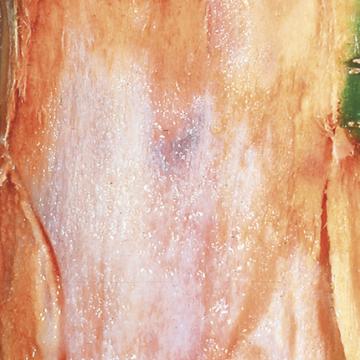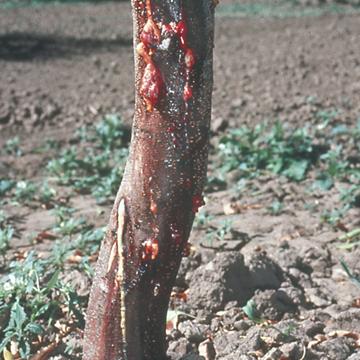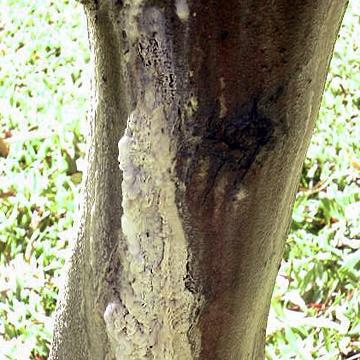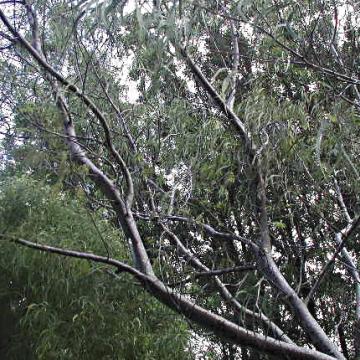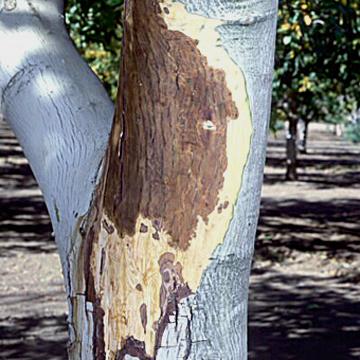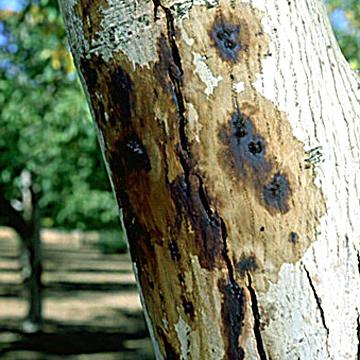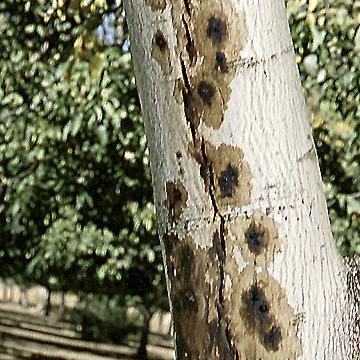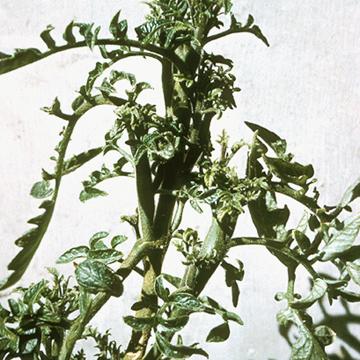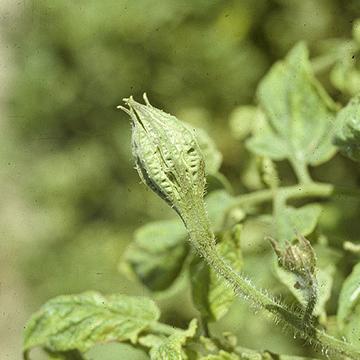DISEASE: Foamy canker
HOST: Almond
White, macerated tissues near cambium region is characteristic of disease. Foam is usually associated with cankers. The disease is suspected to be bacterial but the causal agent has not been identified.

Foamy canker | Almond
DISEASE: Foamy canker
HOST: Almond (Prunus dulcis)
PATHOGEN: Causal agent unknown
SOURCE: B. Teviotdale
DISEASE: Foamy canker
HOST: Almond
Amber red-colored ooze sliding down the trunk. The causal agent has not been identified.
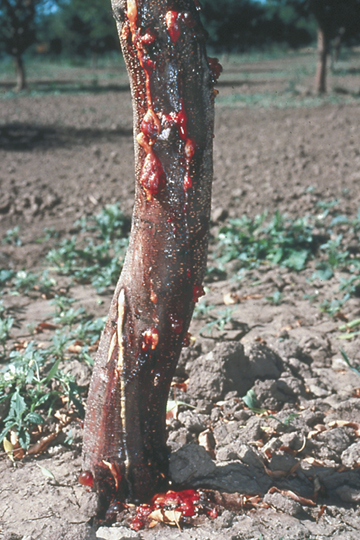
Foamy canker | Almond
DISEASE: Foamy canker
HOST: Almond (Prunus dulcis)
PATHOGEN: Causal agent unknown
SOURCE: B. Teviotdale
DISEASE: Foamy canker
HOST: Koa
Foamy canker of koa is associated with bacteria and yeast. The causal agent has not been identified.
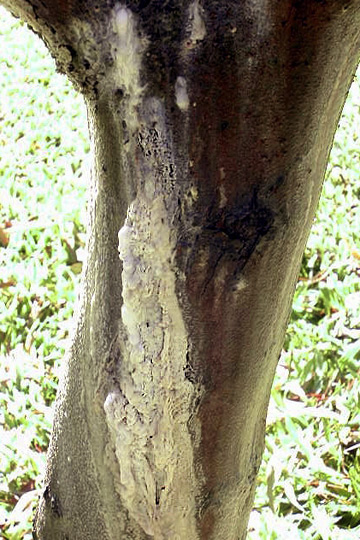
Foamy canker | Koa
DISEASE: Foamy canker
HOST: Koa (Acacia koa)
PATHOGEN: Causal agent unknown
SOURCE: H. Keyser
DISEASE: Foamy canker
HOST: Koa
Dieback of koa tree. The causal agent has not been identified.
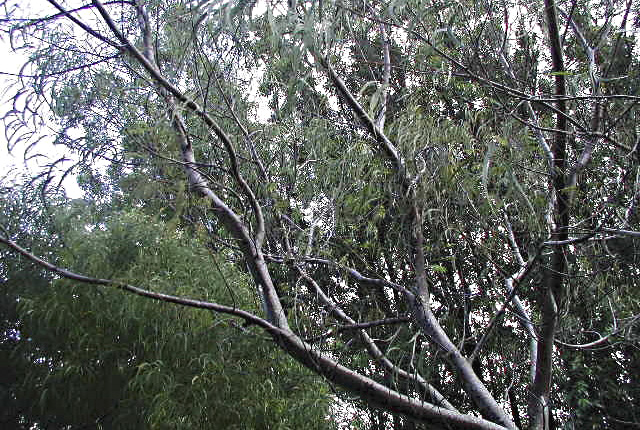
Foamy canker | Koa
DISEASE: Foamy canker
HOST: Koa (Acacia koa)
PATHOGEN: Causal agent unknown
SOURCE: H. Keyser
DISEASE: Shallow bark canker
HOST: Walnut
Diseased, discolored tissues revealed by removing external bark.
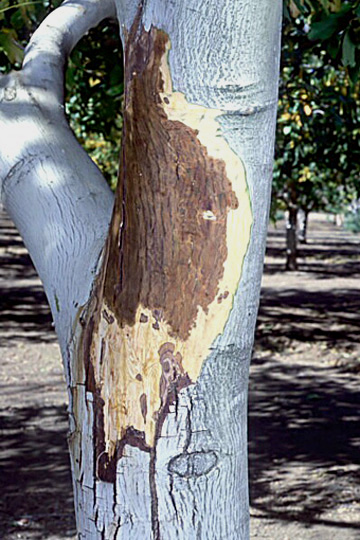
Shallow bark canker | Walnut
DISEASE: Shallow bark canker
HOST: Walnut (Juglans regia 'Hartley')
PATHOGEN: Brenneria nigrifluens
PATHOGEN SYNONYM: Erwinia nigrifluens
SOURCE: B. Teviotdale
DISEASE: Shallow bark canker
HOST: Walnut
Trunk with brown exudate shallow cankers.
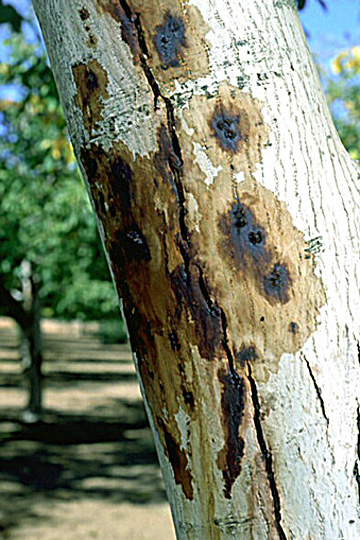
Shallow bark canker | Walnut
DISEASE: Shallow bark canker
HOST: Walnut (Juglans regia 'Hartley')
PATHOGEN: Brenneria nigrifluens
PATHOGEN SYNONYM: Erwinia nigrifluens
SOURCE: B. Teviotdale
DISEASE: Shallow bark canker
HOST: Walnut
Multiple cankers with brown exudate. Cankers on trunk are shallow.
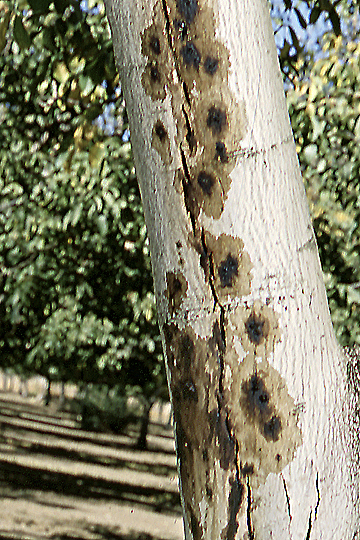
Shallow bark canker | Walnut
DISEASE: Shallow bark canker
HOST: Walnut (Juglans regia 'Hartley')
PATHOGEN: Brenneria nigrifluens
PATHOGEN SYNONYM: Erwinia nigrifluens
SOURCE: B. Teviotdale
DISEASE: Tomato big bud
HOST: Tomato
Characteristic symptoms are swollen, apical stems and stunted leaves. Apical stems are generally thickened and assume a stiff and erect growth habit. Internodes are shortened and flower buds are greatly enlarged.
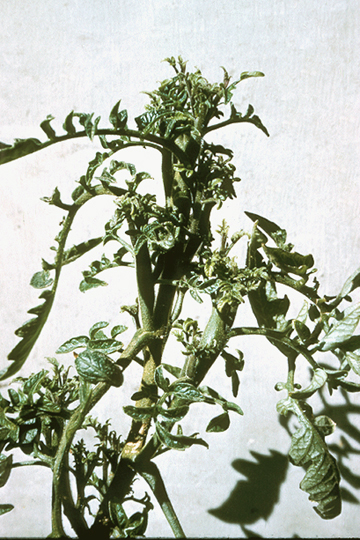
Tomato big bud | Tomato
DISEASE: Tomato big bud
HOST: Tomato (Lycopersicon esculentum)
PATHOGEN: 'Candidatus Phytoplasma asteris'
PATHOGEN SYNONYM: Phytoplasma Aster yellows group
SOURCE: D. Teakle
DISEASE: Tomato big bud
HOST: Tomato
Symptoms are enlarge sepals that do not separate. Flower buds stay green and do not develop into fruit. Leaves are small and chlorotic.
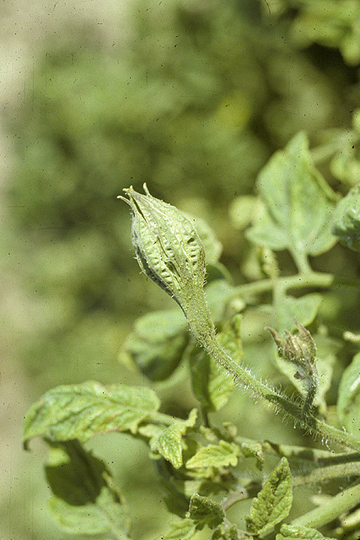
Tomato big bud | Tomato
DISEASE: Tomato big bud
HOST: Tomato (Lycopersicon esculentum)
PATHOGEN: 'Candidatus Phytoplasma asteris'
PATHOGEN SYNONYM: Phytoplasma Aster yellows group
SOURCE: S. Thomson


